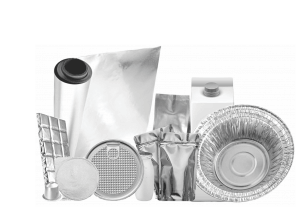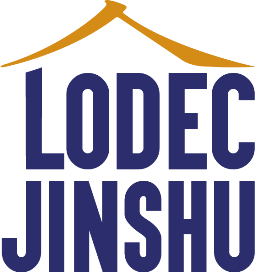In 1911, the Tobler factory in Switzerland which produced Toblerone chocolate, was the first industry to use aluminium foil to pack food.
Nowadays, this is one of the most used sources for flexible food packaging, due to its cost effectiveness, ability to be fully recycled and multiple efficient applications.
The most common employment of this material in food packaging is on catering containers, sachets, pouches, bottle necks, capsule foils, labels and seals.
Key features of Aluminium Packaging:
Many groceries are easily affected by sunlight, which damages their appearance and worsens their taste; but Aluminium foil solves this problem, considering its ability to store food for long periods, preventing contact with germs and bacteria.
This packaging promotes a barrier to light, gases, oil, fats, volatile compounds, water vapor; it is temperature resistant, has good heat conductivity, strength and durability, is flexible and ease for lamination and coating; it has low weight, is recyclable and has a decorative potential with its brilliant or matte surface.
Aside from all these genuine properties, it is non-toxic and compatible with food; but is it dangerous to our health?
Does Aluminium in packaging migrates to food and affects its consumer´s health?
The Aluminium Element can be found in food for several reasons, but the most common is because it occurs naturally (it is the most abundant metal in Earth’s crust) and it migrates to food from aluminium cooking utensils and packaging.
The Food Standards Agency (FSA) regularly measures the amount of aluminium in our diet. They have found that levels of aluminium consumed in food are well within the World Health Organizations’ safety guidelines. FSA food survey on aluminium and other elements in packaged food (link is external).
Studies have shown that packing in aluminium containers increased this metal levels in food only by a very small amount, leading researchers to conclude that using aluminium foil for food packaging is safe to its consumers, The manufacturing of aluminium packaging has to comply with the rules laid down by European Regulation 1935/2004, and it must not change the nature, substance or quality of the food.
The Aluminium food packaging market :
The food and beverage industry is the largest end-user of aluminum foil packaging and occupied more than 28% of the total market share in 2015 at the Global Aluminum Foil Packaging Market.
Approximately 7 billion aluminum foil containers are produced annually. This production rate nets to 220 containers produced every second.The packaging of pet food, tuna, coffee and soups alone produces 13 billion packages that are candidates for replacement with flexible foil-based packages.
Lodec Jinshu is well positioned to offer aluminium foil worldwide. With offices in Shanghai, Singapore and Bremen we can meet all your supply needs. We stock a large range of foil ranging from 4,0 Micron up to 100 Microns for numerous applications including converter foil for packaging, blister foil for the pharmaceutical industry, container foil, capacitor foil, household foil, foil for cable wrap and much more. Please contact us now with your detailed inquiry.
Source: http://www.aluminiumleader.com/economics/ – https://www.technavio.com/report/global-packaging-global-aluminum-foil-packaging-market-2016-2020 – http://www.aluminum.org/product-markets/foil-packaging
